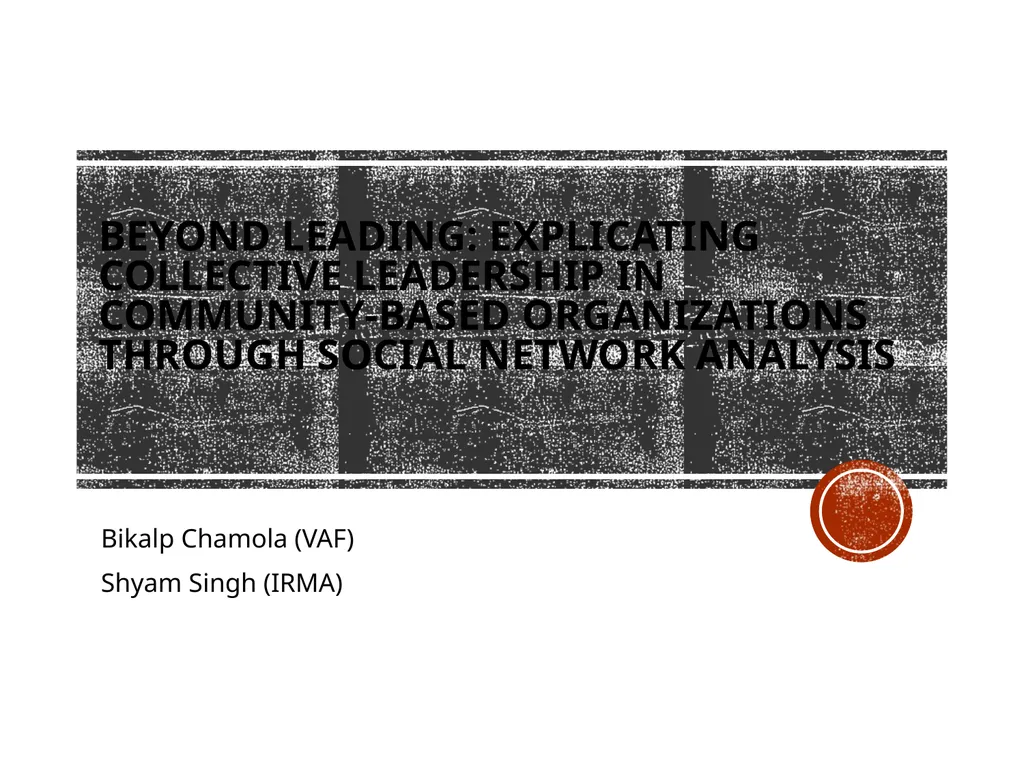
Beyond Leading: Explicating collective leadership
Author: mitsue-stanley | Published: 2025-05-29
Description: Beyond Leading: Explicating collective leadership in community-based organizations through social network analysis Bikalp Chamola (VAF) Shyam Singh (IRMA) Introduction What do we already know? Community based collective actions are
Download Presentation
Download the PPT/PDF: Download
Transcript:
Loading transcript…